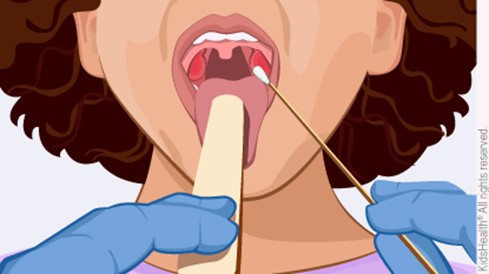A client admitted to the coronary care unit with an inferior wall myocardial infarction is anxious, sweating, tachypneic, and reports midsternal chest discomfort and nausea.
Which nursing diagnosis is the priority?
Anxiety.
Acute pain.
Knowledge deficit.
Nausea and vomiting.
The Correct Answer is B
This is because acute pain is the most urgent and life-threatening problem for a client with myocardial infarction.
Acute pain indicates ongoing ischemia and tissue damage, which can lead to complications such as heart failure, arrhythmias, or cardiogenic shock. Therefore, relieving pain is the priority nursing diagnosis.
Choice A. Anxiety is wrong because anxiety is not a specific symptom of myocardial infarction and anxiety is due to the discomfort that happens due to activation of the sympathetic pathway which is good for survival.
Choice C. Knowledge deficit is wrong because knowledge deficit is not an immediate problem for a client with myocardial infarction.
Knowledge deficit can be addressed after the acute phase of the condition is over and the client is stable.
Choice D. Nausea and vomiting are wrong because nausea and vomiting are common symptoms of myocardial infarction, but they are not as urgent and life-threatening as acute pain.
Nausea and vomiting can be treated with antiemetics and fluids, but they do not affect the outcome of the condition as much as pain does.
Nursing Test Bank
Naxlex Comprehensive Predictor Exams
Related Questions
Correct Answer is A
Explanation
This is the proper way to obtain a throat culture, which is a test to look for infections in the back of the throat.

Some possible explanations for the other choices are:
Choice B is wrong because there is no need to avoid eating or drinking after a throat culture.
The swab does not interfere with the normal function of the mouth or throat.
Choice C is wrong because coughing while swabbing the throat could contaminate the sample or cause discomfort to the client. The swab should be gently passed along the back area of the throat and tonsils.
Choice D is wrong because swabbing only the anterior tongue would not collect enough cells from the infected area. The swab should reach the back of the throat where bacteria or fungi may grow.
Correct Answer is B
Explanation
This is because the resident is independent and sociable, and has the right to choose her own grooming preferences.
Serving her breakfast in her room will respect her autonomy and dignity, and prevent her from missing a meal.
Choice A is wrong because omitting her breakfast will deprive her of nutrition and hydration, and may cause health problems.
It will also violate her rights as a resident.
Choice C is wrong because getting her up early enough to be ready for breakfast will disrupt her sleep cycle and may cause fatigue or stress.
It will also impose the nurse’s values on the resident, and disregard her preferences.
Choice D is wrong because having her go to breakfast regardless of the state of her grooming will embarrass her and lower her self-esteem.
It will also disrespect her culture and values, and may affect her social interactions.
Whether you are a student looking to ace your exams or a practicing nurse seeking to enhance your expertise , our nursing education contents will empower you with the confidence and competence to make a difference in the lives of patients and become a respected leader in the healthcare field.
Visit Naxlex, invest in your future and unlock endless possibilities with our unparalleled nursing education contents today
Report Wrong Answer on the Current Question
Do you disagree with the answer? If yes, what is your expected answer? Explain.
Kindly be descriptive with the issue you are facing.
